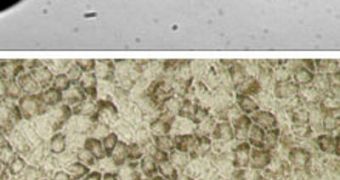Advanced Cell Technology (ACT), a biotech company that was founded about a decade ago, has finally obtained permission from the US Food and Drug Administration (FDA) to start clinical trials on a new, embryonic stem cell-based therapy to address one of the most common causes of blindness in the US.
Macular degeneration is the most common cause of blindness in people older than 60, and is extremely widespread in society. If experts manage to develop a cure for it, then they could literally help millions.
The approach ACT is taking to accomplishing that is relatively straightforward – replace certain cells in the retina of patients with embryonic stem cells (ESC), that would then go on to differentiate into healthy, new retinal cells.
ACT started investigating ways of conditioning ESC to transform into retinal cells some 10 years ago, and the new clinical trials represent the successful coronation of all those years of hard work.
Over the years, Japanese researchers have shown that embryonic stem cells are the most potent type of cells in the human body, as they have the ability to differentiate into any type of tissue that is demanded of them.
The biotech company picked up on that, and decided to invest more than $20 million into research and development into the disease that affects roughly 1.7 million Americans. The dry form of macular degeneration, responsible for 90 percent of cases, is the primary target of the trials.
“If you can intervene early and preserve vision, that's a major accomplishment,” explains the leader of the animal study stage in the research, Raymond Lund. He holds an appointment as a researcher at the Casey Eye Institute, which is based at the Oregon Health Sciences University.
In the new treatment option, a type of retinal cell called retinal pigment epithelium will be replaced with ESC. These cells have been selected because they are the ones that begin to deteriorate most rapidly when the disease sets in.
For four to five months, ACT researchers grow embryonic stem cells in cultures, and then force them to differentiate into RPE cells. When the process is complete, the new cells are injected in the eye, Technology Review reports.
“The cells wind up in the back of the eye, as they should, and are able to sustain vision,” Lund explains. The technique has proven itself to be highly effective in lab animals.
“I am really excited; [ACT] is pioneering the use of embryonic stem cells in ocular disease, and that's a great thing,” explains the director of Neurobiology and Behavior at the University of Washington, Thomas Reh, who was not a part of the work.

 14 DAY TRIAL //
14 DAY TRIAL //